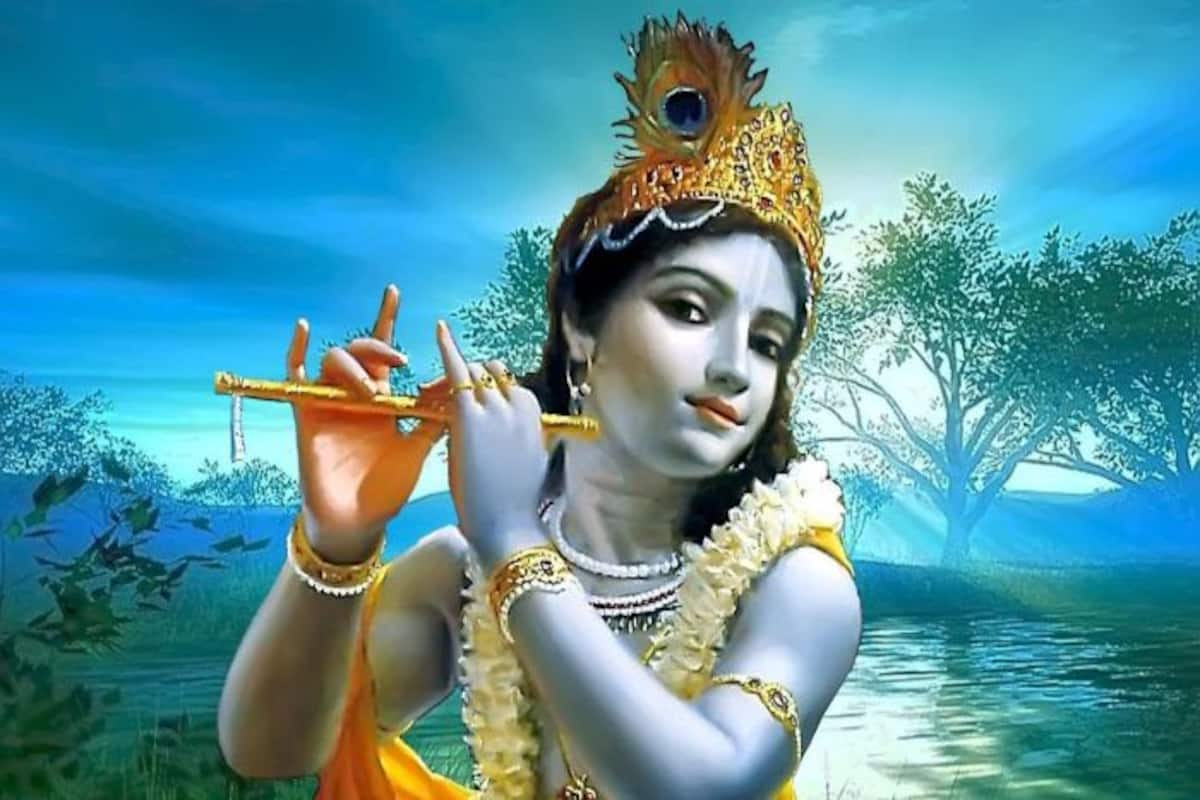
Shantha Rajan
Sri Krishna set his foot outside Vrindavan never to return again. His tryst with the world was calling him. Time had come for Him to become Gurutama:, the Master of the Masters. Time had come for world and humanity to hear the gospel of Action, Time had come to prove that the Divine consciousness in human being could be brought out with the guidance of master carrying the blazing lamp of knowledge. It is with this purpose that the Anantatma,the Unending Absolute in Time, Space and Matter has taken birth in Time and space as Devaki nandana, as an avatara.
Sri Aurobindo, the greatest thinker of the modern times and an Avtar in himself appropriates greatest significance to Sri Krishna as an Avatar. For Sri Aurobindo Krishna’s avatara is said to be poornavatara or the complete one, because it is not only for the divya karma that He takes birth as a human being but it is also for the transformation of human being into a divya janma.
Since His birth, Krishna had to encounter innumerable asuric spirits right from Putana to Shishupala, from shakatasura to the wicked kamsa. This is the divya karmafor which he descended on this earth. But he was not satisfied with the elimination of evil alone. If Dharma was not re-established a vacuum would be created in the society. He taught Bhagavad Gita to Arjuna in order to sow the seeds ofdivya janma in the humanity.
The Divine teacher
We all know that Arjuna was about to commence the most important action of his life, an action for which he was readying for all these years when he suddenly lost his mental balance and became an embodiment of inaction. It was at this juncture that the Divine Teacher, through His Divine Voice initiated Arjuna, his closest friend, now turned into a disciple, into the Yoga of Action.
In fact, no other scripture, either religious or philosophic, attributes such significance to the gospel of works (the Karma yoga) as Gita emphasises. Bhagavad Gita is meant for an ordinary man battling in his ordinary way of life and encountering manifold difficult situations. Remember, it was amidst the hue and cry of a battlefield that the Divine teacher, full of compassion towards his friend, imparted the philosophy of mankind and a way of life. He was the greatest psycho therapist in action at the given time. Its thoughts and advicesare so universal that an individual can realise one’s fullest human possibilities.” Human possibilities here refer to the range of capabilities of human mind as reflected in his actions, emotions and knowledge. The more he expands such capabilities, the greater is the progress set to be made by the human being. Taken collectively, the whole society progresses if each human being contributes his bit in these fields of human endeavour. This is the picture of Divya Janma as propounded by Sri Aurobindo.
The core teaching of Bhagavad Gita, therefore revolves round three steps of human possibilities. The first is the yoga of Action reflecting in selfless performance of works, appropriating fruits of such works to the Divine. The second one is that of Jnana yoga, or the yoga of union with God in which one realises that his will is not ultimate, that it is driven by the Universal Will and that he need not abjure the world for realising One’s self. The third step is that of Bhakti, seeking the Lordship through supreme adoration as if life is nothing but the love for the God. When all these three are done simultaneously with total surrender to the Divine, Divya janma in human form takes birth and the purpose for which the Lord of Lords took the Avatara is said to be fulfilled.
Krishna as flute player
It is truly amazing to note that this Great teacher of par excellence was once a cowboy in the muddy streets of Brindavan stealing not only butter and curds in each and every home but also the hearts of the inmates of these homes.
True to his name, Little Krishna had already captured the hearts and minds of all the gopis of Brindavan. They were neither scholars nor preachers of the great Truth towards self-realisation. But their surrender to their little Lord was so complete that, Krishna decided to initiate them into the path of the Union of Atma and Paramatma. With full moon as witness, on sharad Poornima, the divine teacher brought out his flute and started playing the divine raga. The divine music attracted all towards the Divine Piper as it were. Not one soul which did not yearn for the union with the Lord was left behind. Even animals were not exception. Sri Aurobindo writes in his poem ‘Krishna’
Nearer and nearer the music draws,
Life shudders with a strange felicity
Hoping her lord to touch, to clasp, to be
All Nature is a wide enamoured pause
With His divine music and the Raasakrida the Divine Dance he could remove the
raga राग (passion) and dvesha द्वेष (haterd) from his beloved ones. They had attained Divya Janma and later could take on Uddhava also. That’s a different story.
The flute player left back his flute with Radhaa and set His foot out of Brindavan to become the Divine teacher. The task lying ahead was more difficult, complicated and intricate even for an Avatara, namely, Krishna.
with the one and only celestial divine song – Srimad Bhagaavad Gita in his lips and full of compassion for the mankind in his heart he decided to become the Divine Teacher, the world has ever seen.
कृष्णं वन्दे जगद्गुरुम्